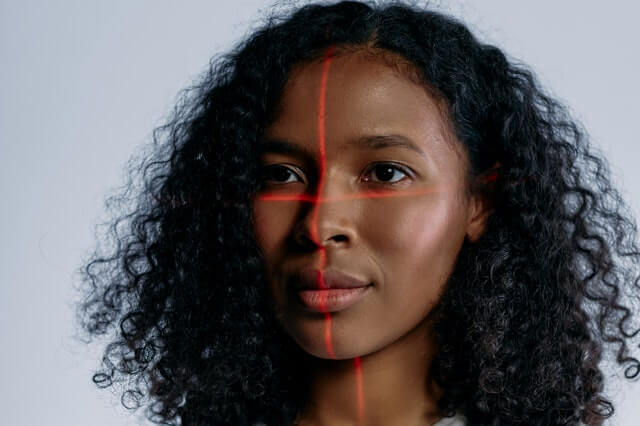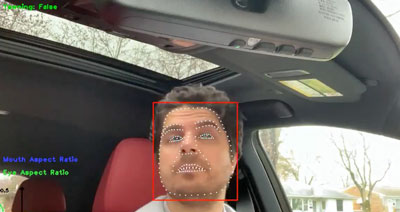Face Recognition vs. Face Analysis:
What’s the Difference?
Face analysis and face recognition are two potential uses of face detection. Face detection is an artificial intelligence (AI) application capable of “spotting” human faces in digital images. Once the application system spots a face, two things can happen:
- Face recognition: Identify or verify the human beings who appear in the images.
- Face analysis: An intersection between computer vision, Machine Learning and Image processing fields that aims to extract any kind of information from human face except his/her identity such as emotion, engagement, vitals measurement, demographics information age and gender to name a few.
But how exactly does face recognition work? How does it differ from face analysis?
First, we have to start with face detection.

What Is Face Detection Technology?
As the name suggests, face detection is computing technology capable of locating the presence of human faces within digital images and video. It was introduced in 2001 and can be considered a subcategory of object detection technology.
Face detection does not identify people or give names to faces. The technology simply checks to see whether there is, in fact, a person in a certain photograph or video. It uses machine learning algorithms to scan digital images for human faces, typically by looking for the eyes first and then calculating the edges of each human face. This is how the system pinpoints exactly where human faces are and counts how many people are present in a photo or video.
Face Detection Applications
Digital cameras may be the most common application of face detection software. Those tidy rectangles that appear around people’s faces on the display screen are an example of the technology at work. Face detection can also be used for security purposes — for instance, to keep track of how many people have entered an area so it doesn’t become crowded beyond its capacity.
Even marketing makes use of face detection. Applications can be programmed to display an advertisement whenever they detect a human face in the vicinity. Overall, we have only begun to scratch the surface in terms of use cases.
What Is Face Recognition Technology?

Face recognition technology is one use of face detection. Where face detection simply identifies the presence of a face in an image, face recognition either verifies or identifies an actual person.
Once a system establishes that there is, in fact, a face present, it uses a series of algorithms to examine that face. The algorithms rely on specific details, such as:
- How far apart are the eyes?
- How high is the bridge of the nose?
These details are known as “facial landmarks,” and the more landmarks a face recognition system can read, the more accurate the system will be. Those landmarks are used to create a precise mathematical representation of the face.
At this point, face recognition runs the face –- or rather, the mathematical representation of it — against an existing database of faces to find a match and identify the person in the picture.
Face identification is distinct from face verification, which compares two digital images to confirm that they are the same person. Face verification is carried out with the individual’s consent. Face identification, on the other hand, scans faces and then runs them against a database to identify them, usually on behalf of law enforcement. Individuals cannot opt out of the process.
Face Recognition Applications
Face recognition technology has many applications, and security is what most people think of first. Most widely known is the biometric capability that can be used to unlock phones and make secure digital payments. Police departments and public health officials also make frequent use of the technology. In the field of banking, facial verification can prevent fraud and strengthen Know Your Customer (KYC) compliance. It can also assist in tracking the use of medication.
Face recognition can be used to enhance privacy protections. Snapchat users, for example, can choose to block their own faces from appearing in a snap, something that would be impossible without recognition tools.
What Is Face Analysis Technology?
Both face recognition and face analysis begin with face detection. But unlike face recognition, face analysis doesn’t pursue identification or verification. Instead, it focuses on gathering actionable insights from facial expressions and positioning, without putting a name to the face.
Using the detailed set of facial landmarks that face recognition also leverages, face analysis can figure out where human eyes are focused and can even “read” the emotions on human faces.
This is what makes it possible for AI to determine whether drivers are focused on the road. It can also pinpoint the moment when faces in a video chat become irritated, afraid, or bored. Additionally, face analysis can estimate ages and collect other demographic information.
Face Analysis Applications
Face analysis is changing the way online retailers do their work. The technology makes it possible to “try on” makeup, jewelry, or eyeglasses virtually to get an accurate look at what the product will look like on your customer’s face. In the field of ad testing, face analysis can help advertisers gauge the emotional impact of video ads on viewers. It analyzes people’s moment-to-moment facial expressions to understand whether a spot will sell.
Face analysis has applications in the medical field, where researchers have been using it to help diagnose genetic disorders so that they can be treated as early as possible. By pinpointing patients’ precise level of pain, it can also be used to help doctors prescribe medication.
Additional Reading: Face Analysis in Healthcare: Evolution of the House Call, Telehealth, and Bedside Manner

AlgoFace AI: Enriching Lives, Protecting Privacy
The possibilities for face analysis are virtually endless. And as AI applications expand, one major concern AI technology providers have to address is privacy. Can their technology be trusted to keep personal information secure?
AlgoFace’s Identify-Free Biometrics is built on the belief that every identity is sacred. Our technology analyzes unique facial attributes to perform a wide range of applications, such as monitoring driver attentiveness, but never to identify the person behind a face. We create technology that puts user privacy front and center, and we’re committed to keeping things that way.
AlgoFace also operates on the edge and processes data in real time. Meaning, it’s fast and safe, delivering real-life augmented reality (AR) experiences at lightning speed. Learn more about FaceTrace today to explore the power and potential of face analysis technology.




